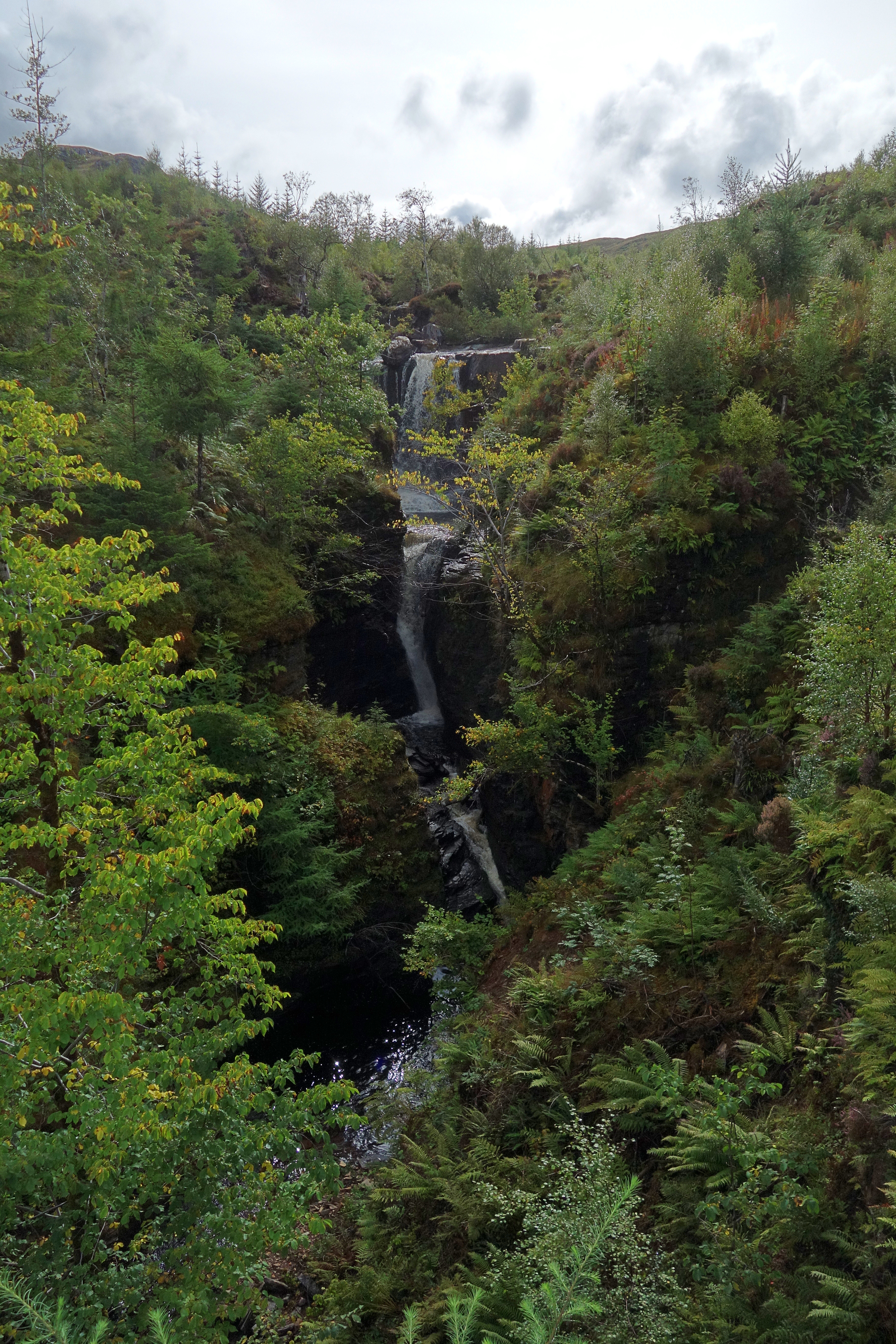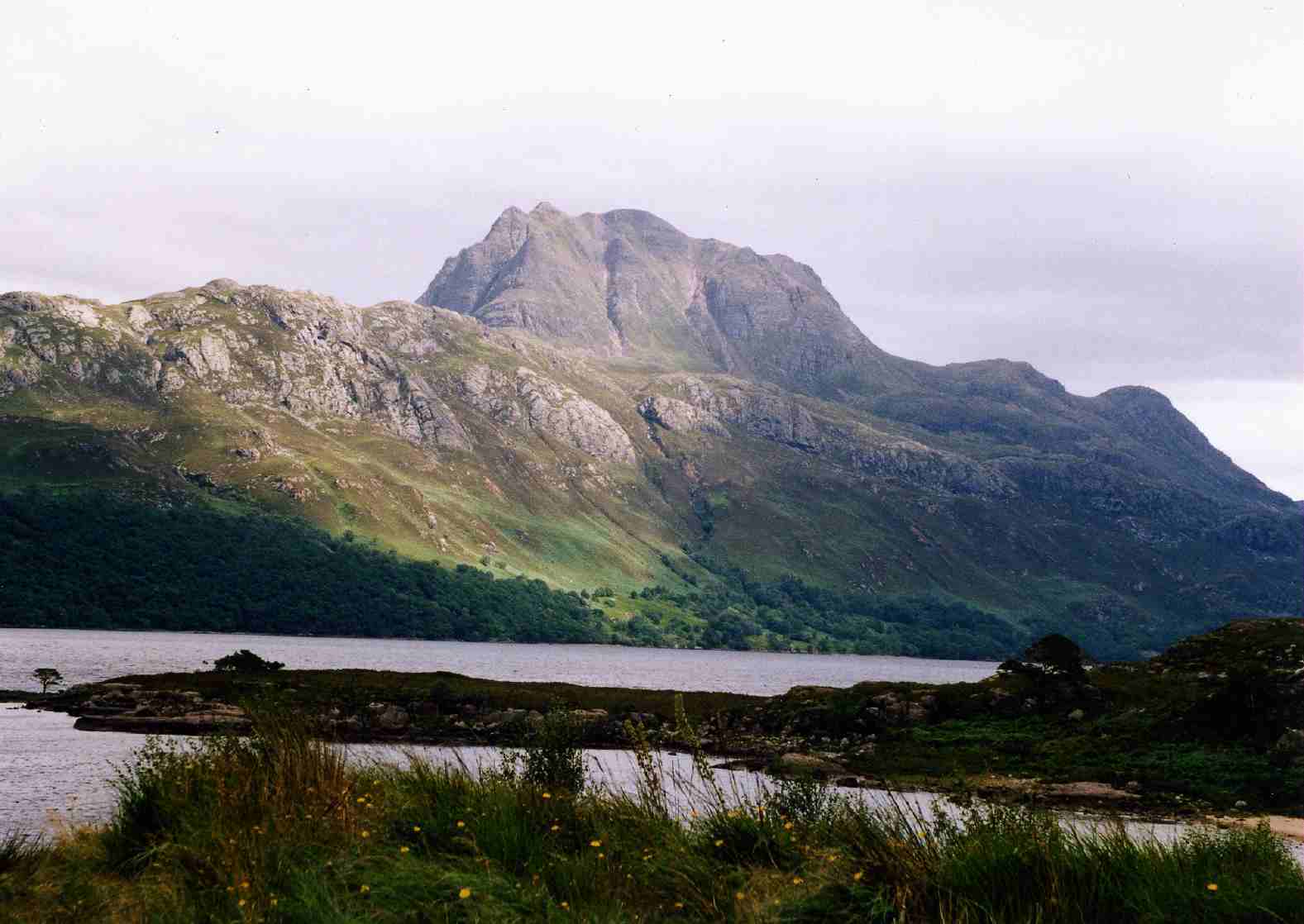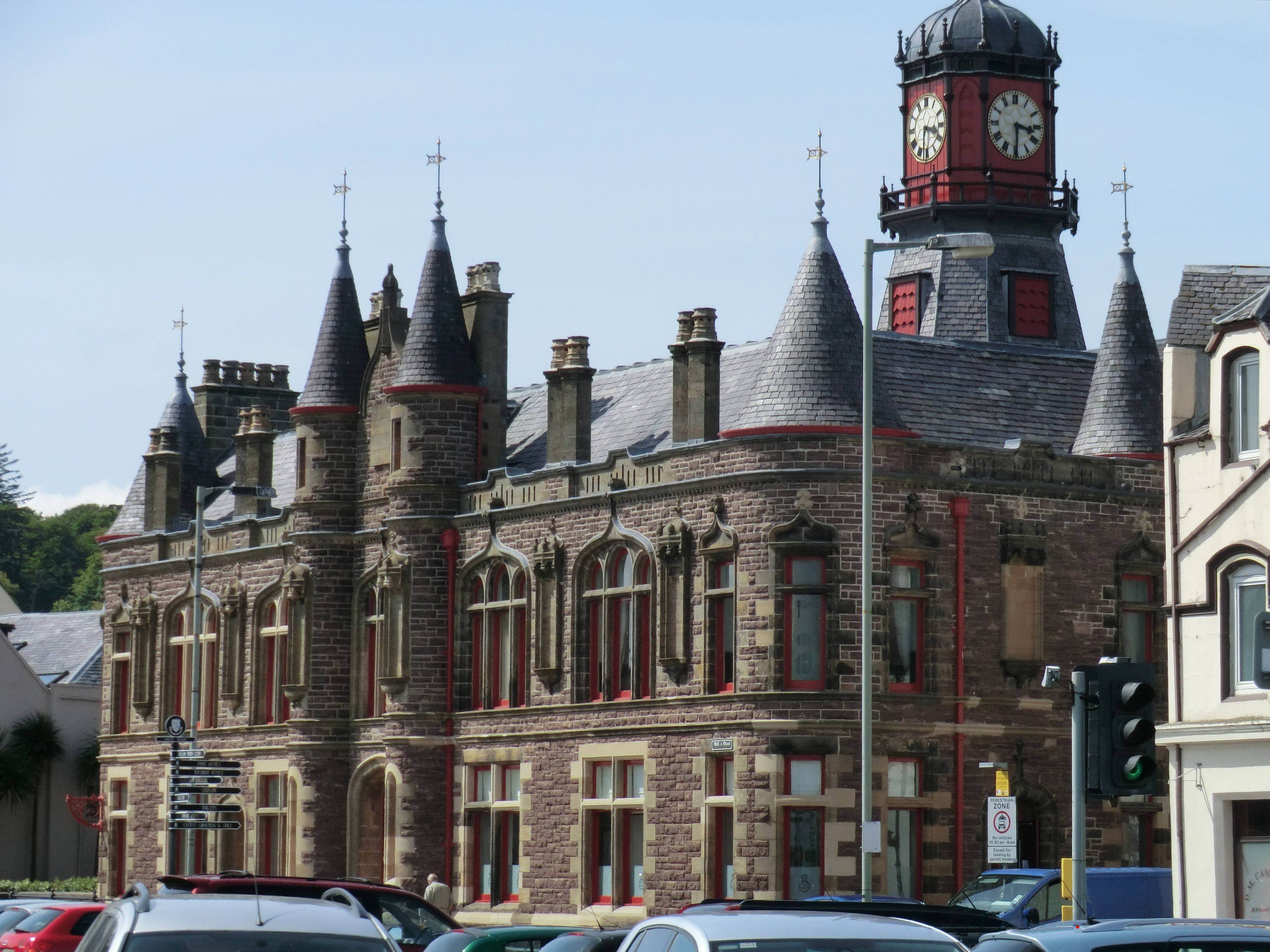|
Loch Maree And Aultbea Railway
The Loch Maree and Aultbea Railway was one of several branch railway-lines proposed for the North-West Highlands of Scotland in the early 1890s. Although a full survey was conducted in 1892 and a Private Bill was submitted to the Westminster Parliament on 18 November 1892,Edinburgh Gazette, 18 November 1892, pp.1262ff the necessary Act to permit construction did not receive approval and the plan was dropped. Historical background In 1890 and 1891, six lines connecting the west of north Scotland to the central spine were to be considered by two Parliamentary Commissions.Report of the Western Highlands and Islands Commission, August 1890Report of the North-West Coast of Scotland Railway Committee, April 1892 These were: * the extension of the Dingwall and Skye Railway from Stromeferry to Kyle of Lochalsh * the extension of the West Highland line from Banavie to Mallaig and new branch-lines from: * Garve to Ullapool, leading from the Dingwall and Skye Railway * Achna ... [...More Info...] [...Related Items...] OR: [Wikipedia] [Google] [Baidu] |
Loch Maree
Loch Maree ( gd, Loch Ma-ruibhe) is a loch in Wester Ross in the Northwest Highlands of Scotland. At long and with a maximum width of , it is the fourth-largest freshwater loch in Scotland; it is the largest north of Loch Ness. Its surface area is . Loch Maree contains five large wooded islands and over 60 smaller ones, many of which have their own lochans. The largest island, Eilean Sùbhainn, contains a loch that itself contains an island,Ordnance Survey. 1:25000 ''Explorer'' map. Sheet 433, Torridon - Beinn Eighe & Liathach. a situation that occurs nowhere else in Great Britain. Isle Maree holds the remains of a chapel believed to be the 8th century hermitage of Saint Máel Ruba (d. 722), who founded the monastery of Applecross in 672. It is after him that Loch Maree is named; prior to the saint's arrival in the area the loch is believed to have been named Loch Ewe, as evidenced by the name of the village of Kinlochewe ( gd, Ceann Loch Iù, meaning "Head of Loch Ewe") which ... [...More Info...] [...Related Items...] OR: [Wikipedia] [Google] [Baidu] |
Stornoway
Stornoway (; gd, Steòrnabhagh; sco, Stornowa) is the main town of the Western Isles and the capital of Lewis and Harris in Scotland. The town's population is around 6,953, making it by far the largest town in the Outer Hebrides, as well as the third largest island town in Scotland after Kirkwall in Orkney and Lerwick in Shetland. The traditional civil parish of Stornoway, which includes various nearby villages, has a combined population of just over 10,000. The Comhairle nan Eilean Siar measures population in a different area: the ''Stornoway settlement'' area, Laxdale, Sandwick and Newmarket; in 2019, the estimated population for this area was 6,953. Stornoway is an important port and the major town and administrative centre of the Outer Hebrides. It is home to ''Comhairle nan Eilean Siar'' (the Western Isles Council) and a variety of educational, sporting and media establishments. Until relatively recently, observance of the Christian Sabbath (Sunday) has been associate ... [...More Info...] [...Related Items...] OR: [Wikipedia] [Google] [Baidu] |
Kinlochewe
Kinlochewe ( gd, Ceann Loch Iù or ) is a village in Wester Ross in the Northwest Highlands of Scotland. It is in the parish of Gairloch, the community of Torridon and Kinlochewe and the Highland council area. It lies near the head of Loch Maree in its magnificent valley, and serves as a junction between the main Ullapool road north, and that which heads west to the coast at Loch Torridon. Loch Maree was at one time also known as Loch Ewe, hence the village's apparently confused name. Community Kinlochewe has a couple of shops, a hotel and bunkhouse, mountain chalets, several bed and breakfasts, a post office (with internet café), and one of very few petrol filling stations for many miles in any direction. Buses connect the village with Gairloch, the railhead at Achnasheen, Dingwall and Inverness. The village contains two churches, Kinlochewe Free Church, built in 1873, and the Church of Scotland. To the north of the village, by the car park, is a First World War (1914–18) ... [...More Info...] [...Related Items...] OR: [Wikipedia] [Google] [Baidu] |
Glen Docherty
Glen Docherty ( gd, Gleann Dochartaich) is a glen in Wester Ross in Scotland, between Loch Maree and Kinlochewe to the west and Loch a'Chroisg and Achnasheen to the east. The A832 road runs through the glen, which runs between the peaks of Càrn a' Ghlinne () to the north and Carn Loisgte () to the south. Until recently this was a single track road with passing places, but of the road has now been upgraded to double track. Formation Volcanic activity in this region ceased about 50 million years ago, after which the landscape was shaped by glaciation from about 1.8 million years ago to the end of the Great Ice Age An ice age is a long period of reduction in the temperature of Earth's surface and atmosphere, resulting in the presence or expansion of continental and polar ice sheets and alpine glaciers. Earth's climate alternates between ice ages and gree ... about 10,000 years ago. The U-shaped glen of Glen Docherty is typical of a glen formed by the action of glaciers. ... [...More Info...] [...Related Items...] OR: [Wikipedia] [Google] [Baidu] |
Achnasheen
Achnasheen (Gaelic ''Achadh na Sìne'') is a small village in Ross-shire in the Highland council area of Scotland. The village is situated on the River Bran at the junction of two roads built by Thomas Telford, the A832 and the A890. Despite the size of the village, Achnasheen is also the name of a postal district which covers several much larger communities including Kinlochewe, Poolewe and Laide. This dates from the time when the village railway station, built in 1870, was an important stop on the Kyle of Lochalsh Line, serving a large area of Wester Ross. The railway still operates but all freight and mail, and most passengers, now travel by road. In 1893, a scheme was considered to build a railway from Achnasheen to Aultbea, but it was soon dropped. Between 1961 and 1991, the village was the location of a Royal Observer Corps monitoring bunker, to be used in the event of a nuclear attack. It remains mostly intact. Facilities Facilities in the village are limited. Th ... [...More Info...] [...Related Items...] OR: [Wikipedia] [Google] [Baidu] |
Thomas Meik
Thomas Meik ( – )Thomas Meik ''Grace's Guide''. Retrieved: 8 October 2015. was a 19th-century Scottish engineer. He is particularly associated with s and railways in Scotland and northern England, Meik fathered two prominent engineering sons: and . The firm they founded remains active, today part of the . ... [...More Info...] [...Related Items...] OR: [Wikipedia] [Google] [Baidu] |
Victoria Falls 01
Victoria most commonly refers to: * Victoria (Australia), a state of the Commonwealth of Australia * Victoria, British Columbia, provincial capital of British Columbia, Canada * Victoria (mythology), Roman goddess of Victory * Victoria, Seychelles, the capital city of the Seychelles * Queen Victoria (1819–1901), Queen of the United Kingdom (1837–1901), Empress of India (1876–1901) Victoria may also refer to: People * Victoria (name), including a list of people with the name * Princess Victoria (other), several princesses named Victoria * Victoria (Gallic Empire) (died 271), 3rd-century figure in the Gallic Empire * Victoria, Lady Welby (1837–1912), English philosopher of language, musician and artist * Victoria of Baden (1862–1930), queen-consort of Sweden as wife of King Gustaf V * Victoria, Crown Princess of Sweden (born 1977) * Victoria, ring name of wrestler Lisa Marie Varon (born 1971) * Victoria (born 1987), professional name of Song Qian, Chinese sin ... [...More Info...] [...Related Items...] OR: [Wikipedia] [Google] [Baidu] |
Isle Of Lewis
The Isle of Lewis ( gd, Eilean Leòdhais) or simply Lewis ( gd, Leòdhas, ) is the northern part of Lewis and Harris, the largest island of the Western Isles or Outer Hebrides archipelago in Scotland. The two parts are frequently referred to as if they were separate islands. The total area of Lewis is . Lewis is, in general, the lower-lying part of the island: the other part, Harris, is more mountainous. Due to its larger area and flatter, more fertile land, Lewis contains three-quarters of the population of the Western Isles, and the largest settlement, Stornoway. The island's diverse habitats are home to an assortment of flora and fauna, such as the golden eagle, red deer and seal, and are recognised in a number of conservation areas. Lewis has a Presbyterian tradition and a rich history. It was once part of the Norse Kingdom of the Isles. Today, life is very different from elsewhere in Scotland, with Sabbath observance, the Scottish Gaelic language and peat cutting retainin ... [...More Info...] [...Related Items...] OR: [Wikipedia] [Google] [Baidu] |
Scottish Office
The Scottish Office was a department of the Government of the United Kingdom from 1885 until 1999, exercising a wide range of government functions in relation to Scotland under the control of the Secretary of State for Scotland. Following the establishment of the Scottish Parliament in 1999, most of its work was transferred to the newly established Scottish Executive (now officially the Scottish Government), with a small residue of functions retained by the Scotland Office. History Following the Act of Union 1707 and the adjournment of the old Parliament of Scotland, the post of Secretary of State for Scotland was established within the government of the Kingdom of Great Britain. The Secretary of State was entrusted with general responsibility for the governance of Scotland, with the Lord Advocate acting as chief law officer in Scotland. The post of Secretary of State for Scotland was abolished in 1746, and the Lord Advocate assumed responsibility for government business in ... [...More Info...] [...Related Items...] OR: [Wikipedia] [Google] [Baidu] |
Letterewe
Letterewe is a large estate of several tens of thousands of acres on the north-eastern shore of Loch Maree, South-East of Poolewe, in Wester Ross, Scotland. It is one of the wildest, most remote and least populated areas in the United Kingdom. The estate was once in the possession of the Clan Mackenzie. In 1835, it was purchased by the Lancashire coal magnate, Meyrick Bankes (1811 - 1881), who evicted many of the crofting tenants In 1978, it was bought by the Dutch multi-millionaire, Paul Fentener van Vlissingen, and remains in the ownership of his family. In the 1990s, he negotiated with representative interested groups the "Letterewe Accord", which was revolutionary in its provisions for public access to the estate. In fiction ''Ewan M'Gabhar'', one of the tales and sketches of James Hogg James Hogg (1770 – 21 November 1835) was a Scottish poet, novelist and essayist who wrote in both Scots and English. As a young man he worked as a shepherd and farmhand, and was largely ... [...More Info...] [...Related Items...] OR: [Wikipedia] [Google] [Baidu] |
Gourock
Gourock ( ; gd, Guireag ) is a town in the Inverclyde council area and formerly a burgh of the County of Renfrew in the west of Scotland. It was a seaside resort on the East shore of the upper Firth of Clyde. Its main function today is as a residential area, extending contiguously from Greenock, with a railway terminus and ferry services across the Clyde. History The name Gourock comes from a Gaelic word for "pimple", in reference to the hill above the town. As far back as 1494 it is recorded that James IV sailed from the shore at Gourock to quell the rebellious Highland clans. Two hundred years later William and Mary granted a Charter in favour of Stewart of Castlemilk which raised Gourock to a Burgh of Barony. In 1784 the lands of Gourock were purchased by Duncan Darroch, a former merchant in Jamaica. He built Gourock House near the site of the castle in what the family eventually gifted to the town as Darroch Park, later renamed by the council as Gourock Park. From a sma ... [...More Info...] [...Related Items...] OR: [Wikipedia] [Google] [Baidu] |
Ralph King-Milbanke, 2nd Earl Of Lovelace
Ralph Gordon King-Milbanke, 2nd Earl of Lovelace (2 July 1839 – 28 August 1906) was a British author of ''Astarte: A Fragment of Truth concerning George Gordon Byron, Sixth Lord Byron''. Life He was born at 10 St. James's Square, London on 2 July 1839, the second son of William King-Noel, 1st Earl of Lovelace and Ada Lovelace, the world's first computer programmer. His maternal grandparents were the poet Lord Byron and Annabella Byron, Baroness Wentworth, 11th holder of the barony of Wentworth. His father, who succeeded as eighth Baron King in 1833, was created Earl of Lovelace on 30 June 1838. He was lord-lieutenant of Surrey from 1840 to his death in 1893, and interested himself in agricultural and mechanical engineering. During 1847–8, Ralph was a pupil at Wilhelm von Fellenberg's Pestalozzian school at Hofwyl, near Bern. Subsequently-educated privately, he matriculated at University College, Oxford in 1859, but did not graduate. On 1 September 1862, upon the death o ... [...More Info...] [...Related Items...] OR: [Wikipedia] [Google] [Baidu] |






